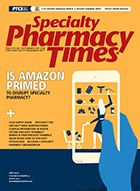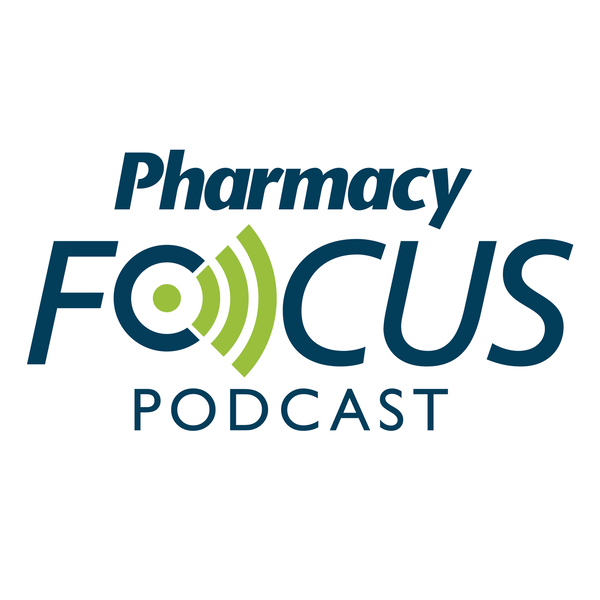Publication
Article
Specialty Pharmacy Times
Finally Getting Real: Biosimilars
New guidelines and standards have facilitated a robust pipeline of biosimilars in the United States.
TWO YEARS AGO, an editorial of mine focused on opportunities for specialty pharmacies in the biosimilar space. There was a good deal of excitement and industry noise at the time, and great things were supposed to happen. What we did not anticipate was a slowdown by the FDA in developing regulatory standards. Well, guidelines and standards have since been published and the pipeline for biosimilars in the United States is becoming quite robust.
The Center for Biosimilars™
To get ahead of the curve, we have developed The Center for Biosimilars™ (centerforbiosimilars.com). The mission of The Center for Biosimilars™ is to leverage, build, and support the authoritative voices that advance the understanding of emerging therapies and address the existing gap between clinical and health economic data.
The center provides strategic options for modeling health economics and cost-effectiveness data based upon diverse clinical scenarios. Importantly, we have a strong business focus in the biosimilar space where payers, physicians, pharmacists, and patients can go for important information.
This digital platform has rapidly become the industry standard for biosimilars. Our editorial board consists of recognized and highly respected authorities in the biosimilar and health care industries, including health economics experts, pharmacists, managed care professionals, and key clinical specialists. Stay tuned to this resource for your practice as we continue to roll it out, and see below for an opportunity to subscribe.
The Arrival of Biosimilars in the US Market
On March 6, 2015, Sandoz’s Zarxio, biosimilar to Amgen’s Neupogen (filgrastim), was the first biosimilar in the United States to be approved by the FDA. Since that approval broke open the floodgates, much progress has been made in establishing a viable biosimilar market in the United States.
As of April 2017, the FDA has approved 5 biosimilars, most recently giving the green light to Samsung Bioepis’ Renflexis (infliximab-abda), an intravenous infusion for multiple indications. This also marks the second FDA approval for a biosimilar to Johnson & Johnson’s Remicade, following the approval of Pfizer and Celltrion’s Inflectra (infliximab-dyyb). 
Both Inflectra and Renflexis have been approved as biosimilars, but not as interchangeable biosimilars. Other approved biosimilars include Amgen’s Amjevita (adalimumab-atto)—the first biosimilar version of AbbVie’s best-selling biologic Humira—and Sandoz’s biosimilar to Amgen’s blockbuster Enbrel, known as Erelzi (etanercept-szzs).
What I find interesting is the willingness of brand organizations to jump into the biosimilar fray with modest experience in the multisource world of rebates, discounts, and competitive pricing. Will these industry giants be able shift their culture to capture market share? In a recent SPT® article, we predicted:
- By 2020, biosimilars will start competing with original biologics that currently have annual sales of $50 billion.
- Biosimilar use in the European Union (EU) and United States may yield total savings of $56 billion to $110 billion over the next 5 years.
- Within 3 years, 8 major biologic medications are expected to lose exclusivity protection, including treatments for autoimmune disorders and diabetes.
- Health care systems, by opening markets to biosimilar competition, could realize a 30% reduction in price per treatment day compared with originator biologics.
Europe Is Ahead of the Curve
This year, the EU crossed into its 11th year with biosimilars on the market. According to QuintilesIMS, nearly 90% of EU doctors know what biosimilars are and close to 60% have prescribed them. Biosimilars approved in the EU have generated more than 400 million patient days of positive clinical experience.
No untoward effects or unexpected adverse events have been reported. Whatever the degree of cost savings, product access to these important therapies has increased by 44%. Given the single-payer system present in most other nations, acceptance and cost containment have been priorities, which leads to greater acceptance. We suspect that will be the case here in the United States. While we do not have a single-payer system, managed care and the system for reimbursement will likely drive utilization once approval conditions have been met.
Will FDA Regulatory Changes bring Clarity?
In January 2017, the FDA issued its interchangeability guidance that provides the agency’s policies on the data and information needed to demonstrate interchangeability between biosimilars and innovator products. If a manufacturer wants its biosimilar product to have fewer barriers to substitution or switching in order to meet the statutory requirement for interchangeable products, a switching study must be performed in 1 or more conditions for products intended to be administered multiple times.
The FDA explains that, “[T]he main purpose of a switching study, or studies, is to demonstrate that the risk, in terms of safety or diminished efficacy, of alternating or switching between use of the proposed interchangeable product and the reference product is not greater than the risk of using the reference product without such alternation or switch.”
In the nonbiosimilar world, we have the traditional AB-rated products, whose compendia is the Orange Book. For biosimilars, the FDA published the Purple Book, which lists biological products, including any biosimilar and, now, interchangeable biological products.
The Purple Book will serve as the gold standard for how biosimilars may be substituted once the dust settles. There is healthy debate going on right now regarding the role of the pharmacist in being able to substitute an interchangeable biosimilar for that of an innovator product, particularly for patients who may have already been on the innovator product, or an interchangeable biosimilar versus another for chronic use therapies, in the future.
Visit centerforbiosimilars.com to subscribe and stay on top of the latest developments.
Roll of the Payer
Given the tools at their disposal, payers will likely have significant influence on which biosimilar manufacturers will ultimately be used and for which branded biotech products, regardless of the degree of savings. In the PCSK9 inhibitor and hepatitis C drug space, we have already seen that payers can be very successful in determining which brands get used to secure lower prices. We should only infer and anticipate that we’ll see the same trends in biosimilars. Many payers have already taken a very public stand through their extrapolations of overall health care and drug savings.
NASP Annual Meeting and Educational Conference
The NASP 5th Annual Meeting and Educational Conference will be held September 18 to 20, 2017, at the Marriott Wardman Park hotel in Washington, DC. This event will provide comprehensive information regarding all aspects of specialty pharmacy, including the evolution of the market, the impact on patients, and national legislative and regulatory policy. I’ve taken a sneak peek at the list of top-notch programs and speakers.
The meeting will also include a Specialty Pharmacy Law Conference offering continuing education credits to attendees and a 1-day preparation course for pharmacists studying for October certification examinations given by the Specialty Pharmacy Certification Board. There will also be numerous networking events and opportunities to interact with peers, manufacturers, and service providers at the world class exposition. This is a must-attend event.

Newsletter
Stay informed on drug updates, treatment guidelines, and pharmacy practice trends—subscribe to Pharmacy Times for weekly clinical insights.






